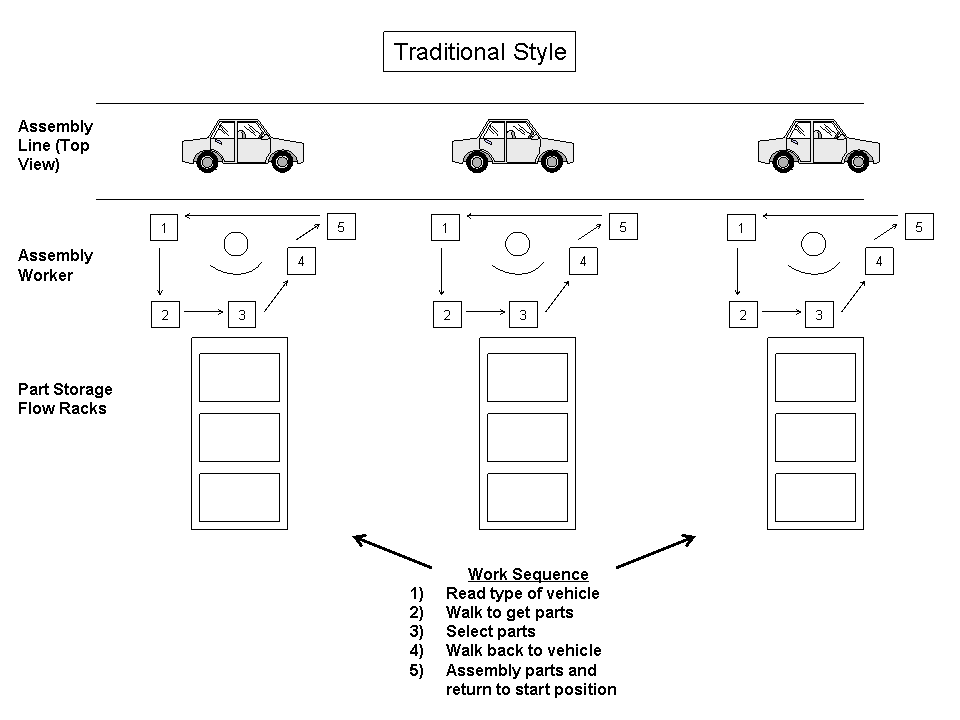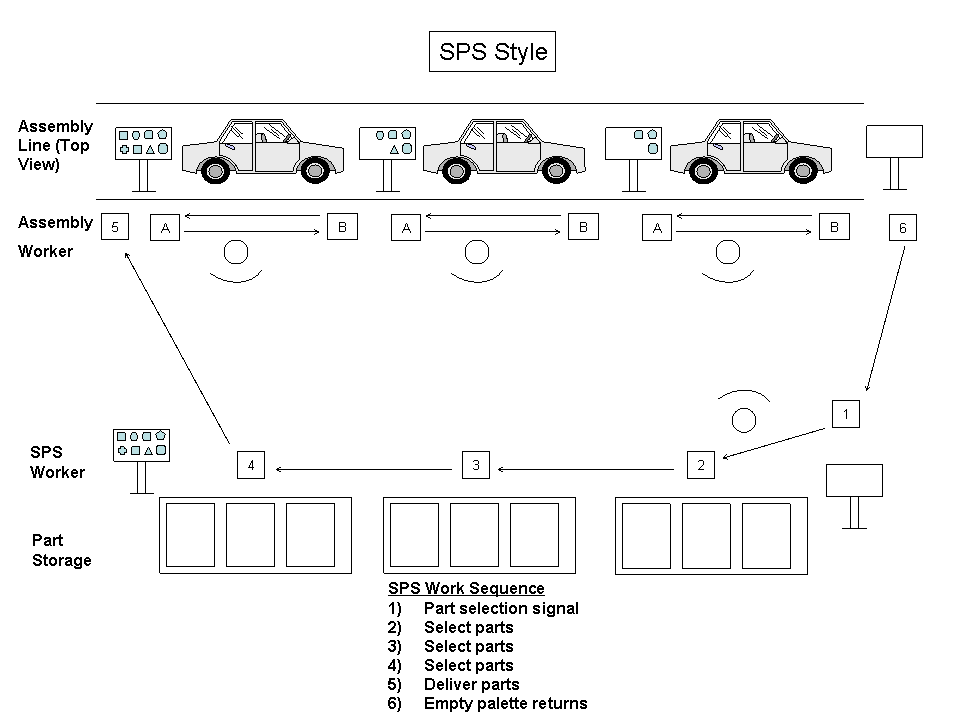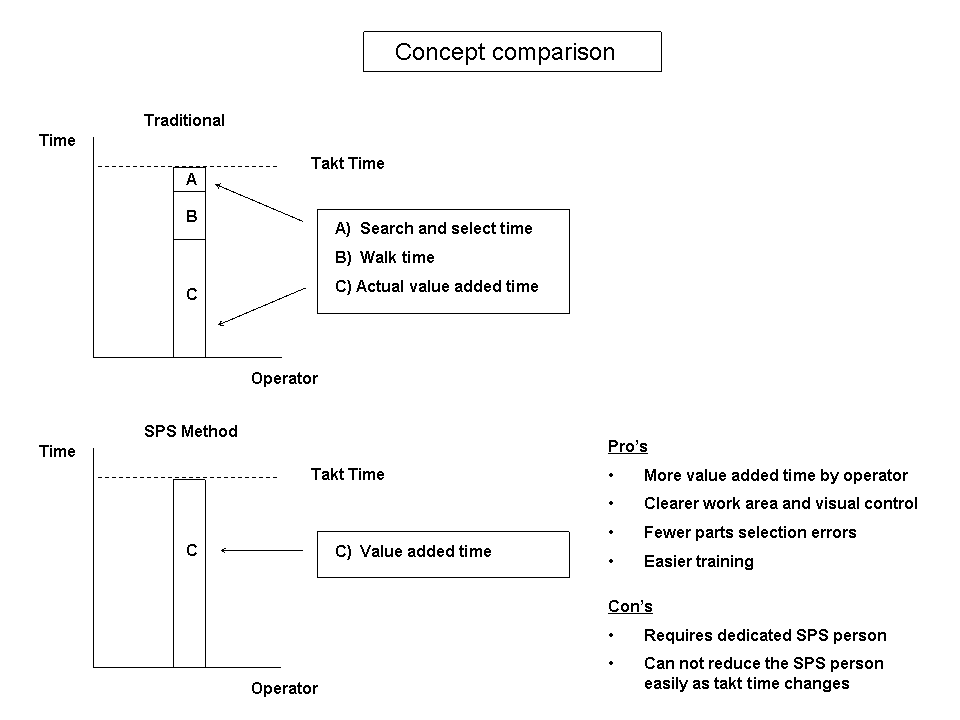Toyota’s New Material-Handling System Shows TPS’s Flexibility
Toyota Motor Corporation has introduced a new material-handling system based on kitting to reduce complexity and improve quality in assembly areas.
The new approach was introduced in Japan and China, according to Art Smalley, author of the Lean Enterprise Institute workbook Creating Level Pull. Smalley saw the new system in action on an engine assembly line during a recent tour of Toyota facilities in Japan. He was one of the first Americans to work for Toyota in Japan in the 1980s and helped transfer Toyota’s equipment and lean manufacturing methods overseas.
A spokesman for Toyota Motor North America said the kitting system was being introduced on “more and more lines” at the Georgetown facility and elsewhere in North America. He said it was “not a complete sea change” in parts presentation and wasn’t applicable to all production areas.
Smalley said the system, called the set pallet system (SPS) in Japan, appeared best suited to automated lines, rather than cells. The new approach removed line-side storage racks, often called flow racks, so operators no longer walked from their assembly stations to get parts. Instead, electronic signals told material handlers what parts to select from bins separate from the line. They then selected and placed the parts on pallets traveling with the engines being assembled (see diagrams below).
“Visually, it’s quite a difference because the flow racks are gone,” said Smalley. “I was surprised. It was a much more open and clear area than the traditional scenario with all the material around the line, which can block you from seeing. The line is so wide open now.”
More Value-Added Work
At Georgetown, the correct parts for a particular Camry or Avalon are selected into a tray that is placed inside the car as it heads down the line. Because part selection is done upstream, assemblers can “focus on the quality of installation,” according to the Toyota spokesman. Variety and the resulting complexity have proliferated as more and more features are offered to customers. For instance, before the new system was introduced for the current generation Camry and Avalon, team members had to choose between 24 varieties of sun visors.
The change means operators now focus nearly 100% of their time on the value-added work of installing parts because they no longer have to perform the nonvalue-adding task of walking a few steps to retrieve parts from flow racks, Smalley noted. “Operators stay in a very tight zone, doing almost 100% value-added time.”
The switch also eliminates reaching, stretching, and searching for parts by assembly operators. The new arrangement also makes training operators and material handlers easier because the job responsibilities are narrower.
The new system concentrates walking and parts selection on the material handlers who are positioned every seven to 10 stations along the engine assembly line, Smalley said.
Although the new system increased the number of material handlers, he commented that, on average, Toyota estimated that the total productivity change was neutral due to the more effective use of direct labor. A minor drawback to the new approach was that it made adding or subtracting pickers incrementally as takt time changed somewhat harder to do.
Advantages and Disadvantages
The big advantage of the new material handling system is simplicity and quality improvement through error avoidance. Smalley explained that Toyota Japan had about 5% seasonal or temporary workers when he was there in the 1980s. “Now the figure is up to 40% in some plants,” he said. “Also the work force is younger than it was 20 years ago and labor law changes allow for more women to work in assembly.”
All these trends create a workforce that is less experienced with factory work and less familiar with automotive components than in the past. Combined with the proliferation of component variety, part selection errors were occurring and small quality problems, like assembly errors and bolts not being sufficiently torqued, were getting downstream. “I guess they just couldn’t poka-yoke everything and the logical step was to simplify further,” he said.
The new system was introduced at a vehicle assembly plant in China co-owned by Toyota that had limited space for storing material at the final assembly the line, Smalley said. A kaizen effort produced the SPS approach. “Other managers saw it and loved the effect it had on clearing up the area around the line,” he said. “The line became less cluttered, easier to see, easier to walk around, and just felt like a much more open work space. One by one the vehicle plants switched over during the past year or two and now the engine assembly lines are doing the same.”
Although the system is considered new, Smalley points out that there was a similar version being used at line number 14 in Toyota’s Kamigo Engine Plant about 20 years ago. The line supplier nearly 100 different types of engines and thousands of minor variations at the part number level used on the engine worldwide. Other lines did not suffer the same complexity issues and the system thus never spread. Smalley noted that adoption of the SPS material handling system today demonstrates that TPS flexibly adapts to the needs of the situation rather than forcing a solution to maintain standardization.

Operators on the traditional assembly line at Toyota spent non value-adding time walking to flow racks to select parts.

Operator walking is dramatically reduced and parts selection eliminated under the new kitting system, also known as the set pallet system. Walking and selecting is concentrated on material handlers, freeing assembly operators to concentrate on installation. In the diagram, operators walk from position A to B during installation, then back to position A. After receiving an electronic signal on what parts to select, material handlers take the parts from line-side bins to a pallet or tray traveling with the car or engine being assembled. Material handlers bring empty trays back to the racks for replenishment at the end of their station positions.

This representative analysis shows in general how operator value-added time increased dramatically under the new system.






